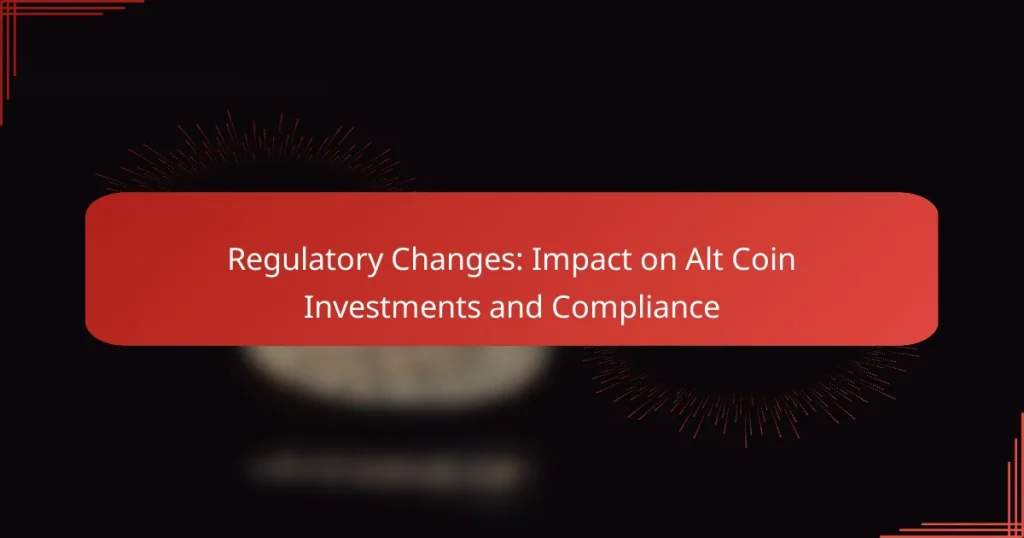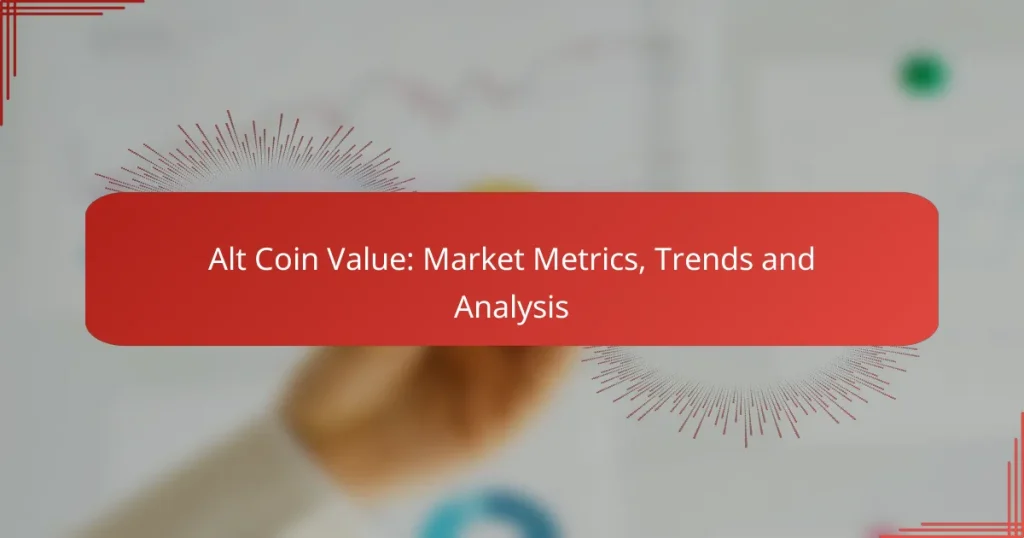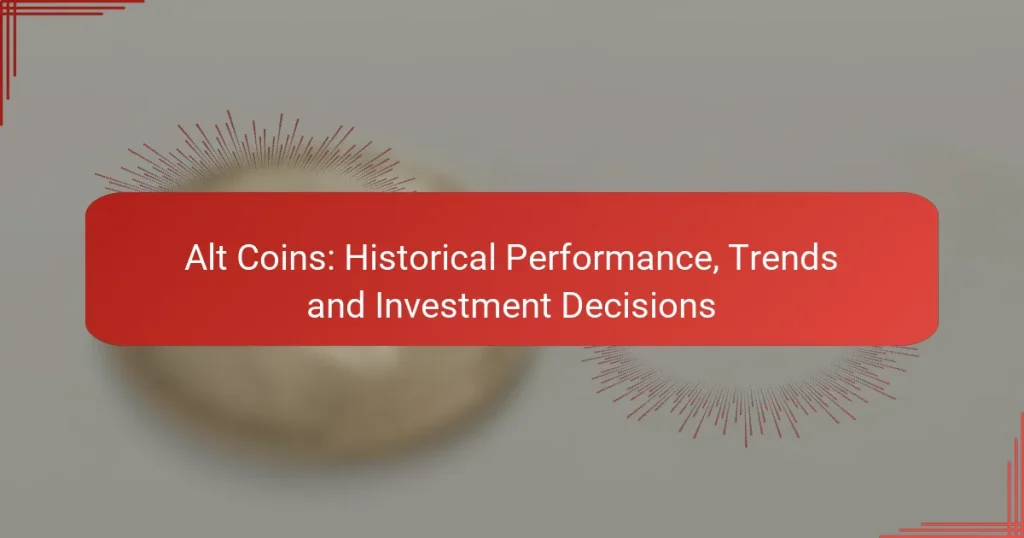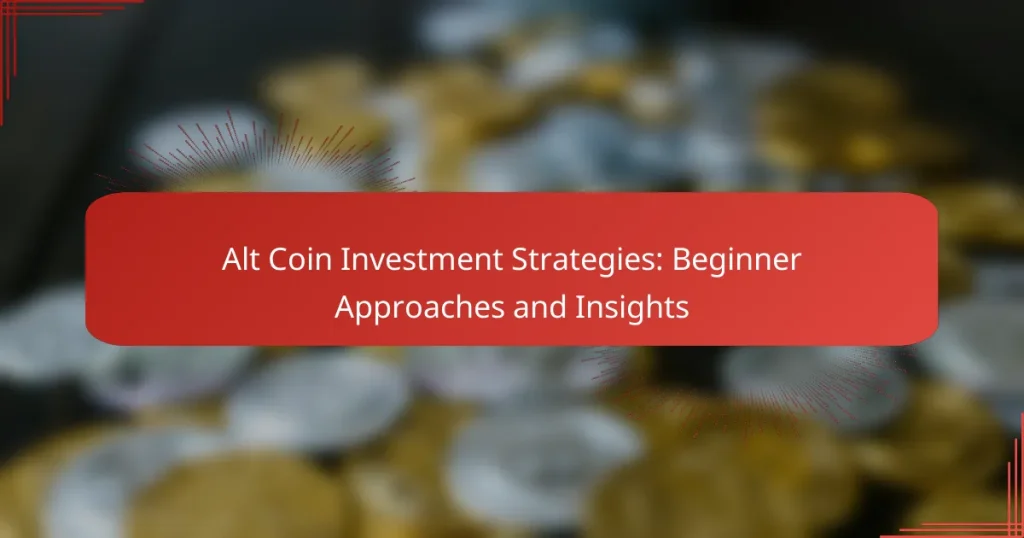As the cryptocurrency market continues to evolve, identifying promising altcoins for investment is crucial for maximizing returns. In 2023, Ethereum, Binance Coin, Cardano, Solana, and Polkadot stand out due to their strong performance and innovative technologies. When evaluating these options, it’s important to consider factors like market capitalization, use cases, and community support to make informed investment decisions.
Alt Coins: Long-Term Growth, Market Trends and Investment Strategies
Alt Coin Value: Market Metrics, Trends and Analysis
Alt Coins: Historical Performance, Trends and Investment Decisions
Alt Coin Investment Strategies: Beginner Approaches and Insights
Alt Coins: Community Engagement, Development Activity and Investment Potential
Risk vs. Reward: Alt Coin Investments Compared
What are the best altcoins for investment in 2023?
In 2023, some of the best altcoins for investment include Ethereum, Binance Coin, Cardano, Solana, and Polkadot. These cryptocurrencies have shown strong performance, innovative technology, and solid use cases, making them attractive options for investors.
Ethereum (ETH)
Ethereum remains a leading altcoin due to its smart contract functionality and robust ecosystem. It serves as a platform for decentralized applications (dApps) and has a large developer community, which enhances its value and utility.
Investors should consider Ethereum’s transition to a proof-of-stake model, which aims to improve scalability and reduce energy consumption. This shift could further increase its adoption and price stability over time.
Binance Coin (BNB)
Binance Coin is the native cryptocurrency of the Binance exchange, one of the largest in the world. BNB is used to pay trading fees on the platform, offering users discounts and incentives for holding the coin.
Its utility extends beyond trading fees, as BNB is also used in various applications within the Binance ecosystem, including Binance Smart Chain. Investors should keep an eye on Binance’s growth and regulatory developments that may impact BNB’s value.
Cardano (ADA)
Cardano is known for its research-driven approach to blockchain technology, focusing on security and sustainability. Its proof-of-stake consensus mechanism is designed to be more energy-efficient than traditional proof-of-work systems.
The platform supports smart contracts and aims to provide a scalable solution for decentralized applications. Investors should watch for updates on its development roadmap and partnerships that could enhance its adoption.
Solana (SOL)
Solana has gained popularity for its high throughput and low transaction costs, making it an attractive option for developers and users alike. Its unique consensus mechanism, called Proof of History, allows for fast processing times.
Investors should consider Solana’s growing ecosystem of dApps and DeFi projects, which could drive demand for SOL. However, potential risks include network outages and competition from other blockchains.
Polkadot (DOT)
Polkadot aims to enable different blockchains to interoperate, creating a multi-chain ecosystem. Its unique architecture allows for the transfer of data and assets between chains, enhancing flexibility and scalability.
Investors should evaluate Polkadot’s parachain auctions and the projects that are being built on its platform. The success of these projects could significantly impact DOT’s value in the market.
How to evaluate altcoins for investment?
To evaluate altcoins for investment, consider factors such as market capitalization, technology, use cases, and community support. These elements can help you gauge the potential success and stability of an altcoin in the competitive cryptocurrency market.
Market capitalization
Market capitalization is a key indicator of an altcoin’s size and stability. It is calculated by multiplying the current price of the coin by its total circulating supply. Generally, altcoins with higher market caps (in the hundreds of millions to billions of USD) are considered less risky compared to those with lower market caps.
When assessing market capitalization, look for coins that are not only popular but also have a consistent trading volume. A stable market cap can indicate a solid investor base and reduce the likelihood of extreme price volatility.
Technology and use case
The underlying technology and use case of an altcoin are critical for its long-term viability. Investigate whether the altcoin solves a real-world problem or offers unique features that set it apart from competitors. For example, coins like Ethereum provide a platform for decentralized applications, which enhances their appeal.
Consider the scalability and security of the technology as well. A coin that can handle a high volume of transactions quickly and securely is more likely to succeed. Look for whitepapers and technical documentation to understand the project’s roadmap and innovations.
Team and community support
The strength of the development team and community support can significantly influence an altcoin’s success. Research the backgrounds of the team members to ensure they have relevant experience and a track record in the cryptocurrency space. A strong, transparent team is often a good sign of a project’s credibility.
Community engagement is equally important. Active forums, social media presence, and regular updates from the team can indicate a healthy ecosystem. A supportive community can drive adoption and provide valuable feedback, enhancing the altcoin’s growth potential.
What are the risks of investing in altcoins?
Investing in altcoins carries several risks that potential investors should carefully consider. These risks include market volatility, regulatory challenges, and the viability of the projects behind the coins.
Market volatility
Altcoins are known for their extreme price fluctuations, often experiencing rapid increases and sharp declines. This volatility can lead to significant financial losses if investments are not timed correctly. For example, an altcoin may surge by 50% in a week, only to drop by 30% shortly after.
Investors should be prepared for these swings and consider setting stop-loss orders to limit potential losses. Diversifying investments across multiple altcoins can also help mitigate risks associated with individual coin volatility.
Regulatory challenges
The regulatory landscape for cryptocurrencies, including altcoins, is constantly evolving. Different countries have varying rules regarding the legality and taxation of altcoin investments, which can affect their market performance. For instance, some nations may impose strict regulations that could hinder trading activities.
Staying informed about the regulatory environment in your country is crucial. Investors should be aware of potential changes that could impact their investments and consider consulting with a financial advisor familiar with cryptocurrency regulations.
Project viability
Not all altcoins are created equal; the success of an altcoin largely depends on the underlying project and its team. Many altcoins are launched without a solid business plan or technological foundation, leading to high failure rates. Researching the project’s goals, team experience, and community support can provide insights into its potential longevity.
Investors should prioritize projects with transparent roadmaps and active development. Engaging with the community and following updates can help gauge the project’s health and viability over time.
How to diversify altcoin investments?
Diversifying altcoin investments involves spreading your capital across various cryptocurrencies to reduce risk and enhance potential returns. This strategy helps mitigate the impact of volatility in any single asset by balancing your portfolio with different types of altcoins.
Invest in multiple sectors
Investing in multiple sectors means allocating funds across various categories of altcoins, such as DeFi, NFTs, and stablecoins. This approach allows you to capture growth in different areas of the cryptocurrency market, which can be particularly beneficial during market fluctuations.
For instance, you might consider investing in a mix of decentralized finance (DeFi) tokens, which can offer high returns, and stablecoins, which provide stability. A balanced portfolio could include 40% in DeFi, 30% in NFTs, and 30% in stablecoins to optimize growth while managing risk.
Allocate based on risk tolerance
Your risk tolerance should guide how you allocate funds among altcoins. If you are risk-averse, consider investing a larger portion in established cryptocurrencies with lower volatility, while allocating a smaller percentage to newer, high-risk altcoins.
A common strategy is to allocate 70% to 80% of your investment in well-known coins like Ethereum or Litecoin, and the remaining 20% to 30% in emerging altcoins. Regularly reassess your portfolio to ensure it aligns with your risk profile and market conditions.
What are the top altcoin trends to watch?
The top altcoin trends to watch include decentralized finance (DeFi), non-fungible tokens (NFTs), and layer 2 solutions. These trends are shaping the future of cryptocurrency investments and offer unique opportunities for growth and innovation.
Decentralized finance (DeFi)
Decentralized finance, or DeFi, refers to financial services built on blockchain technology that operate without traditional intermediaries. This trend allows users to lend, borrow, and trade assets directly, often with lower fees and increased transparency.
Investors should consider platforms like Aave and Compound, which facilitate lending and borrowing. However, be cautious of smart contract risks and ensure you understand the underlying protocols before investing.
Non-fungible tokens (NFTs)
Non-fungible tokens (NFTs) are unique digital assets that represent ownership of specific items, such as art, music, or virtual real estate. The NFT market has exploded, with some pieces selling for millions, attracting both collectors and investors.
When investing in NFTs, focus on established marketplaces like OpenSea or Rarible. Assess the creator’s reputation and the asset’s rarity, as these factors can significantly impact value. Beware of hype-driven purchases and conduct thorough research.
Layer 2 solutions
Layer 2 solutions are protocols built on top of existing blockchains to improve scalability and transaction speed. These solutions address network congestion and high fees, making them attractive for developers and users alike.
Examples include Polygon and Optimism, which enhance Ethereum’s capabilities. Investors should evaluate the potential of these solutions to drive adoption and consider the projects they support. Always stay updated on technological advancements and market trends to make informed decisions.
How to stay updated on altcoin developments?
To stay updated on altcoin developments, regularly follow reputable cryptocurrency news websites, social media channels, and community forums. Engaging with these platforms will help you track market trends, project updates, and regulatory changes that could impact your investments.
Follow cryptocurrency news websites
Reputable cryptocurrency news websites provide timely updates on market trends, regulatory changes, and project developments. Sites like CoinDesk, CoinTelegraph, and CryptoSlate are excellent resources for in-depth articles and analysis. Subscribing to their newsletters can ensure you receive the latest news directly in your inbox.
Engage in community forums
Community forums such as Reddit and Bitcointalk are valuable for real-time discussions and insights from other investors. Participating in these forums allows you to ask questions, share experiences, and learn about new altcoin projects. Always verify information from multiple sources to avoid misinformation.
Utilize social media platforms
Social media platforms like Twitter and Telegram are crucial for following influential figures in the cryptocurrency space. Many project teams and analysts share updates and insights through these channels. Create lists or follow specific hashtags to streamline your feed and focus on relevant content.






